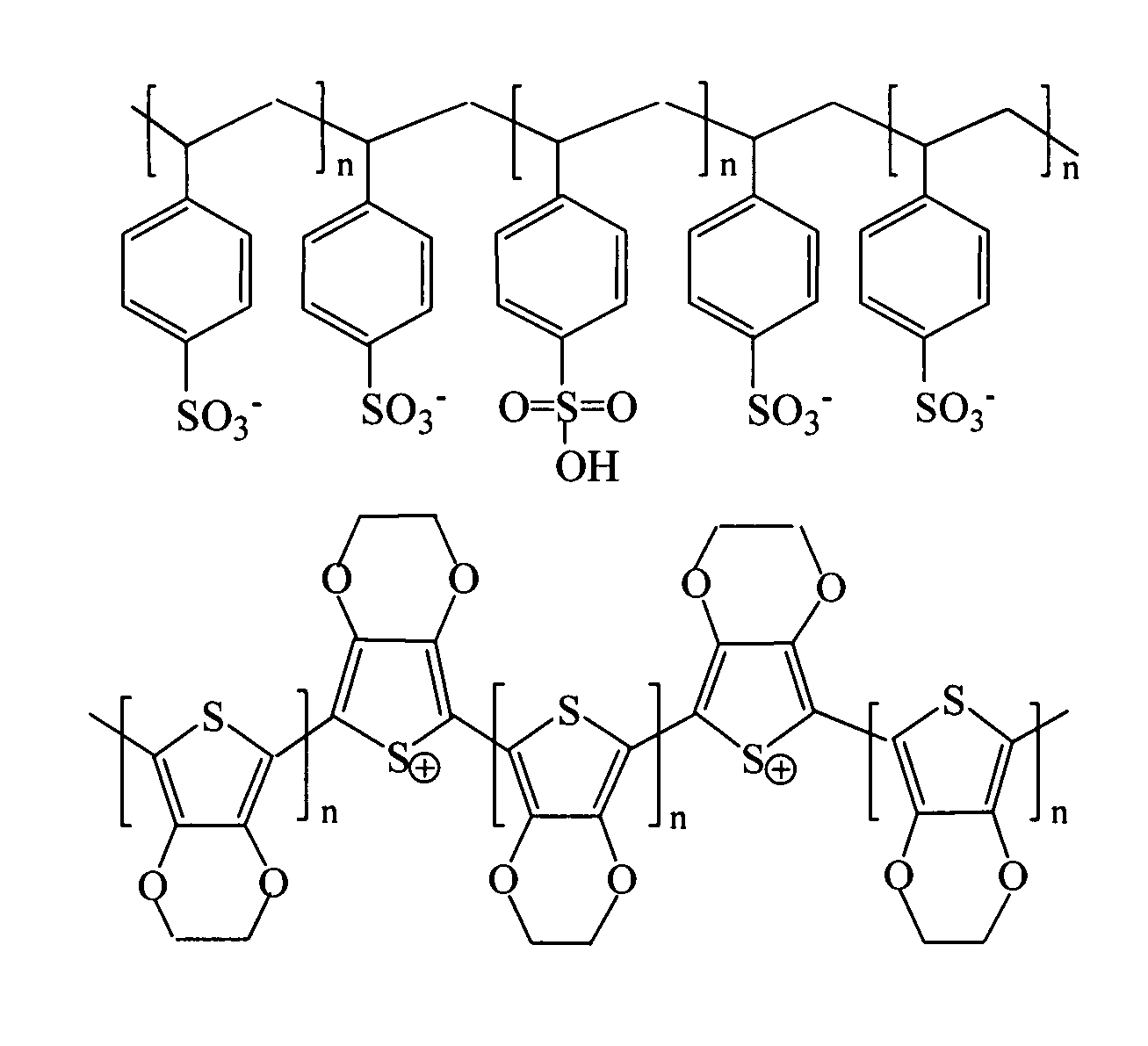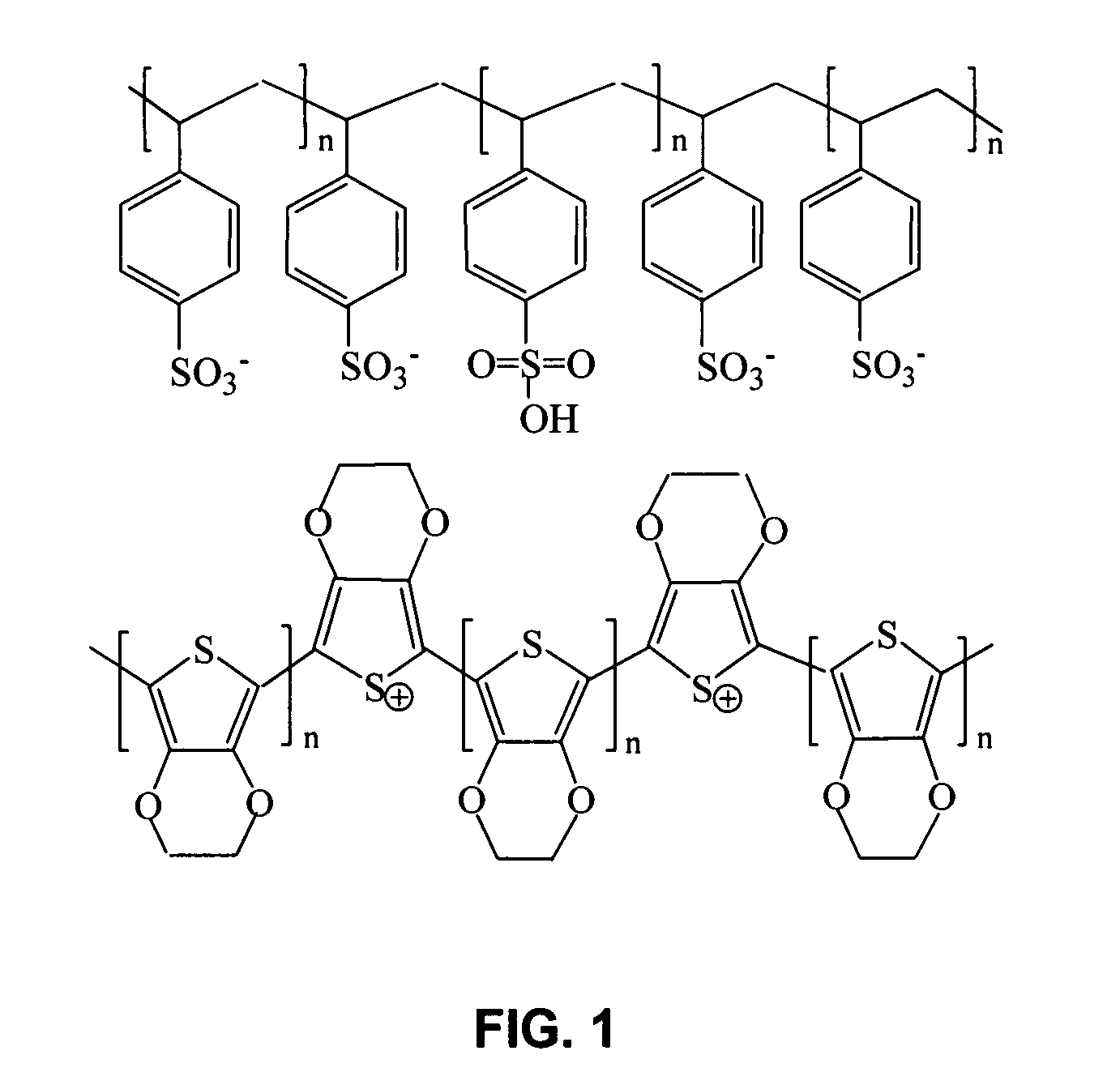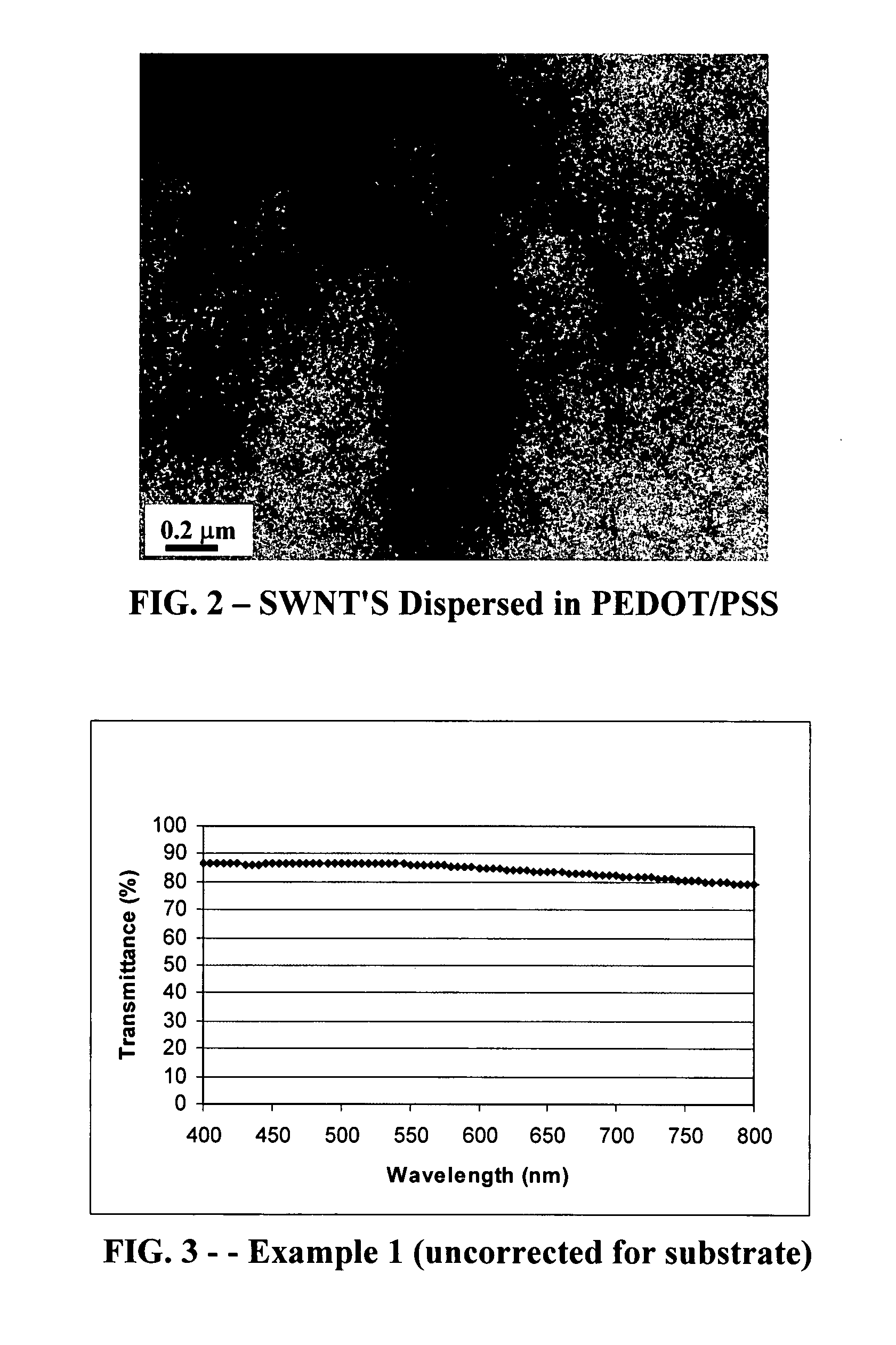Transparent thin polythiophene films having improved conduction through use of nanomaterials
a technology of nanomaterials and transparent thin films, which is applied in the direction of non-metal conductors, sustainable manufacturing/processing, and final product manufacturing, etc., can solve the problems of low adhesion to plastic substrates, low film flexibility, and flaking of polymer coatings, and achieve low levels of single-walled carbon nanotubes
- Summary
- Abstract
- Description
- Claims
- Application Information
AI Technical Summary
Benefits of technology
Problems solved by technology
Method used
Image
Examples
examples
[0073] Sample films were created by either spin-coating or dispersion-coating a conductive polymer of the invention onto either a glass or a plastic substrate. The polymer coatings were dried / cured at an elevated temperature between 80° and 120° C. for between one half hour and one hour to create a hardened film. After drying / curing, the films were cooled to ambient temperature. The films were about 30 nm to about 150 nm thick. No antireflective coating was used.
[0074] Sheet resistance measurements for the dried / cured films were obtained using a standard SYS-301 four probe method at ambient temperature. The four probe resistance method includes a Keithley Model 2000 Digital Multimeter, a Keithley Model 224 programmable current source (Keithley Instruments, Inc.; Cleveland, Ohio) combined with a Signatone SP4-62.5-85-TC four point probe head mounted in a Signatone S-301 mounting stand with a six inch Teflon® disk (Signatone Corporation; Gilroy, Calif.). The instrument was calibrated...
examples 1-5
PEDOT / PSS / SWNT's
[0078] The first group of examples relate to conductive polymers comprising SWNT's. Examples 3-5 comprise both SWNT's and metallic nanoparticles.
Single Wall Carbon Nanotube Purification Methods
[0079] Carboxyl acid-functionalized SWNT's obtained from Carbon Nanotechnology, Inc. (Houston, Tex.) were purified using the following methods:
Purification Method I
[0080] The carboxyl acid-functionalized SWNT's were heated at 500° C. for 1 hour then a solution of 14 ml concentrated HNO3 and 7 ml H2SO4 was added to the SWNT's. This acid / SWNT mixture was then sonicated for one hour. After sonication, the mixture was washed in steps. The first step was to wash with distilled water until the mixture had a pH of between about 6 and about 7 (1400 ml was used). The second step was to wash with 200 ml of tetrahydrofuran. The third step was to wash with 200 ml of acetone. And, the fourth step was to wash with 200 ml of isopropyl alcohol. Finally, the SWNT's were dried over-night ...
example 1
Synthesis of Baytron F HC / SWNT-Nanoparticle Composition
[0083] 2.0 mg of carboxyl acid-functionalized SWNT's (Carbon Nanotechnology, Inc.; Houston, Tex.) were mixed with 40.0 g of distilled water and 0.1 g of PSS. The mixture was sonicated until a uniform SWNT suspension was formed (60-120 minutes). The SWNT's were purified as described above.
[0084] 20.1 g of Baytron F HC (formulated PEDOT / PSS in an aqueous dispersion) and 1.01 g of dimethyl sulfone (DMSO) were combined at ambient temperature, with stirring, in a 250 ml three-necked round-bottom flask equipped with a condenser and a thermometer. The mixture was stirred for at least 30 minutes at ambient temperature. The SWNT purified suspension (2.01 g) was added to the mixture and sonicated for 30 minutes. The resulting mixture contained a hybrid conductive polymer comprising Baytron F HC with dispersed SWNT / PSS.
[0085] Transmission electron microscopy measurements indicated that SWNT's were well dispersed within the Baytron F HC ...
PUM
| Property | Measurement | Unit |
|---|---|---|
| conductivity | aaaaa | aaaaa |
| sheet resistance | aaaaa | aaaaa |
| sheet resistance | aaaaa | aaaaa |
Abstract
Description
Claims
Application Information
 Login to View More
Login to View More - R&D
- Intellectual Property
- Life Sciences
- Materials
- Tech Scout
- Unparalleled Data Quality
- Higher Quality Content
- 60% Fewer Hallucinations
Browse by: Latest US Patents, China's latest patents, Technical Efficacy Thesaurus, Application Domain, Technology Topic, Popular Technical Reports.
© 2025 PatSnap. All rights reserved.Legal|Privacy policy|Modern Slavery Act Transparency Statement|Sitemap|About US| Contact US: help@patsnap.com



